[kl-bogel] A strange and rare animals (61 photos)
In this post would be horrible, nasty, nice, kind, beautiful, strange zveriki.
Plus a brief comment on each. All of them are actually
See and be surprised

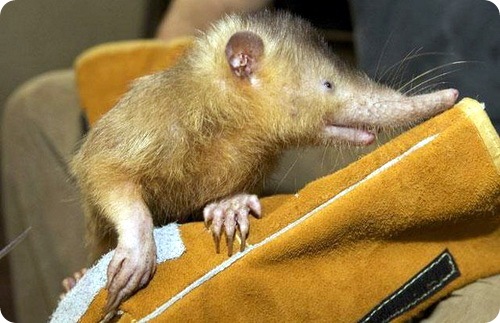
SCHELEZUB - insectivorous mammal of the order, divided into two main types: Cuban and Haitian schelezub. Comparatively large relative to other types of insect, animal: its length is 32 centimeters and the tail, on average, 25 cm, weight of the animal - about 1 kilogram, dense physique.
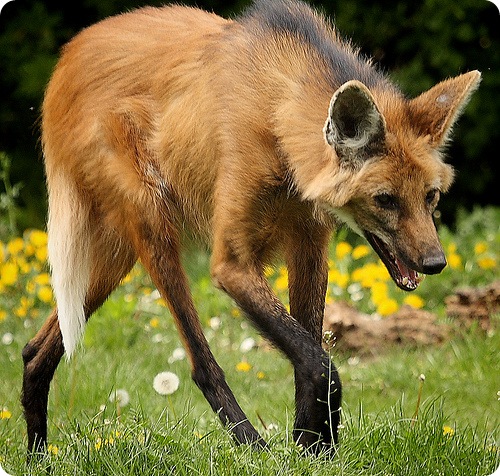
WOLF long-manned. Lives in South America. Wolf's long legs - the result of evolution in the issues of adaptation to habitat, they help the animal to overcome obstacles such as high grass growing on the plains.
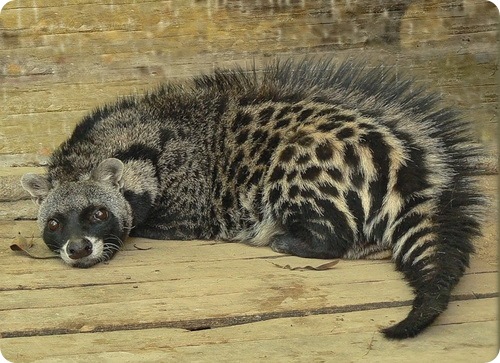
AFRICAN TSIVETA - the sole representative of the eponymous family. These animals live in Africa, in open spaces with high grass from Senegal to Somalia, southern Namibia and eastern South Africa. The dimensions of the beast can visually strong enough to increase when the excitation tsiveta raises hair. And her fur is thick and long, especially on the back near the tail. Paws, muzzle and the tail end of an absolutely black, most of the body pyatnistopolosataya.

Muskrat. The animal is sufficiently well known for its sonorous name. Just picture a good one.
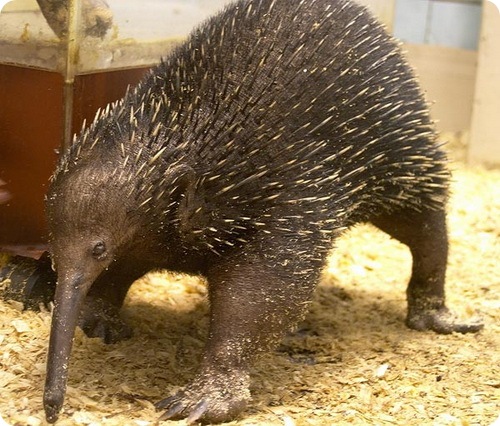
PROEHIDNA. This natural wonder is usually weighs up to 10kg, although there were more large specimens. By the way, the length of the body proehidny reaches 77 cm, and that's not counting their beloved five to seven centimeter tail. Any description of this animal is based on a comparison with a malicious: proehidny feet above the claws more powerful. Another feature of the appearance proehidny - it spurs on their hind legs of males and five-fingered and three-toed hind legs forward.
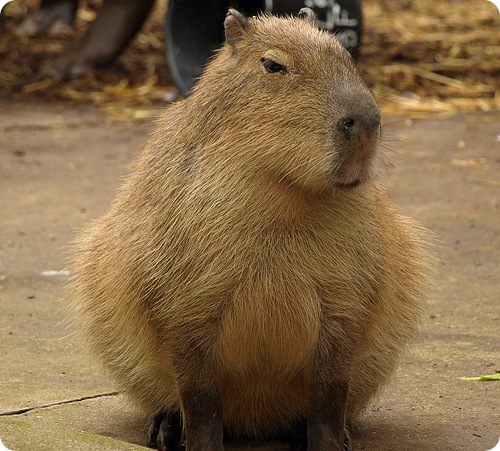
Capybaras. Semi-aquatic mammals, the largest of modern rodents. Is the sole representative of the family vodosvinkovyh (Hydrochoeridae). There is a dwarf variety Hydrochoerus isthmius, sometimes it is treated as a separate species (small capybara).

Sea cucumber. Sea cucumbers. Marine pods, sea cucumbers (Holothuroidea), a class of invertebrates such as echinoderms. Species used for food, have a common name "sea cucumber".

Pangolin. This post just could not do without it.
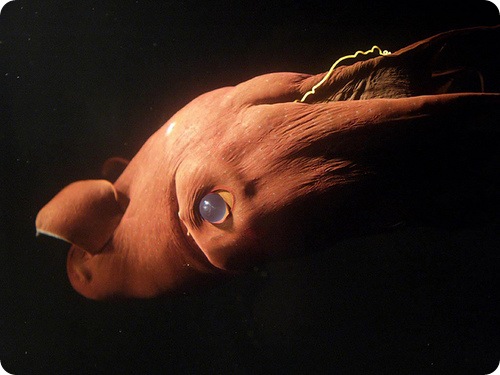
Infernal vampire. Shellfish. Despite its apparent similarity to the octopus and squid, shellfish, scientists have identified this as a separate unit Vampyromorphida (Latin), because as soon as it has its own retractable sensitive bichevidnye filaments.
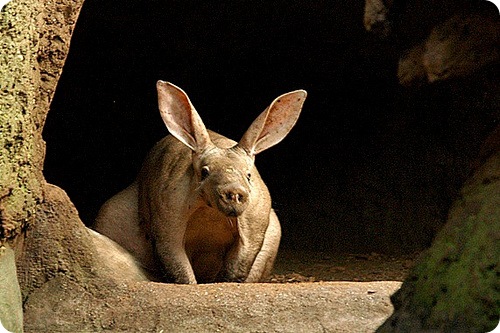
Aardvark. In Africa, these mammals called the aardvark, which is translated in Russian means "earth pig." In fact, aardvark in appearance very much like a pig, but with an elongated snout. The ears of this amazing animal in its structure is very similar to rabbit. It is also still there and the muscular tail, which is very similar to the animal's tail like a kangaroo.
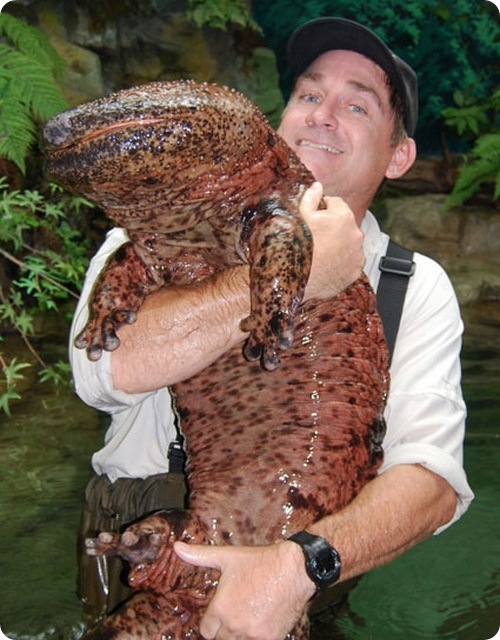
JAPANESE giant salamanders. To date - is the largest amphibian, which can reach 160 cm in length, weigh up to 180 kg and can live to 150 years, although officially registered the maximum age of the giant salamander is 55 years.
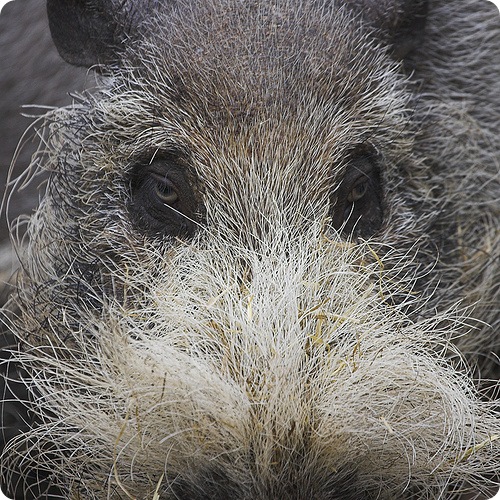
Bearded Pigs. Different sources Bearded pig species is subdivided into two or three subspecies. It's - curly bearded pig (Sus barbatus oi), who lives on the Malay Peninsula and Sumatra, the bearded pig borneyskaya (Sus barbatus barbatus) and bearded pig palavanskaya who live, as the name implies, the island of Borneo and Palawan, as well as in Java , Kalimantan and small islands of the Indonesian archipelago in Southeast Asia.


Sumatran rhinoceros. Belong to the family pet Perissodactyla nosorogovyh. This type of rhinoceros is the smallest of the entire family. Body length of the Sumatran rhino adult can reach 200 - 280 cm and the height at the withers varies from 100 to 150 cm such rhinos can weigh up to 1,000 kg.

SULAVESSKY BEAR couscous. Wood marsupial that lives in the upper tier of the lowland tropical forests. Wool bear couscous is soft undercoat and a coarse guard hairs. Color varies from gray to brown, with light-colored belly and a more limbs and varies depending on geographic and subspecies of the animal's age. Grasping, not woolly tail is about half the length of the animal and serves as a fifth limb, making it easier to advance in the dense tropical forest. Bear Couscous is the most primitive of all the couscous, which retains a primitive dentition and structural features of the skull.
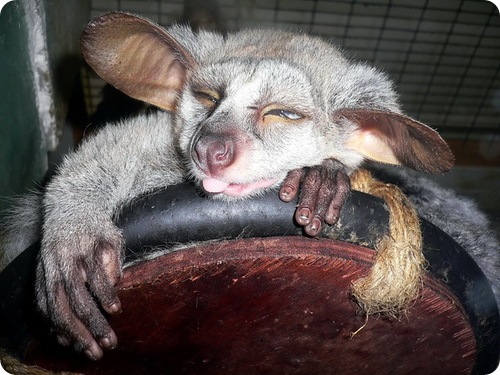
Galago. His big bushy tail is clearly comparable with the squirrel. A charming and attractive face graceful movements, flexibility, and insinuating, clearly reflect his feline trait. Amazing jumping, agility, strength and incredible agility of this animal clearly shows his nature funny cats and the elusive protein. Of course it would where to use their talents, because a small cage for this very ill-suited. But if you give this kind of animal a little freedom, and sometimes let him walk around the apartment, then all its quirks and talents will become a reality. Many people even compare it to the kangaroo.
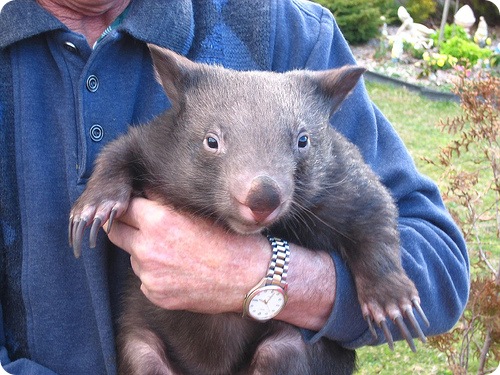
Wombat. No photo wombat generally can not talk about strange and rare animals.
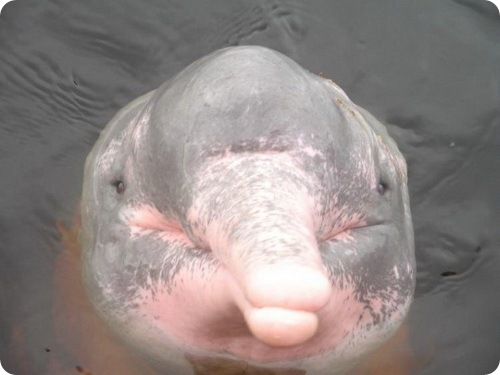
AMAZON DOLPHIN. Is the largest river dolphin. Inia geoffrensis, as scientists call it, up to 2.5 meters in length and weight of 2 tons per. Light gray with age, the juveniles grow lighter. The body of the Amazonian dolphin, complete with a thin tail and a narrow snout. Round his forehead a little hooked beak and small eyes - especially this kind of dolphin. Amazon dolphin is found in rivers and lakes in Latin America.
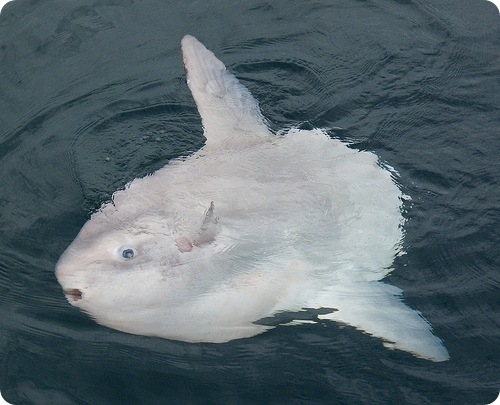
Sunfish or Mola mola-. This fish can be more than three meters long and weigh about one and a half tons. The biggest instance of the fish-moon was caught in New Hampshire, USA. Its length was five and a half meters, the data on weight are not available. The shape of the body of the fish resembles a disc, it is this feature was the occasion for the Latin name. In fish, the moon is very thick skin. It is flexible and its surface is covered with small bony protrusions. The larvae of this species of fish and the juveniles swim in the usual way. Adult Large fish swim on their sides, quietly moving fins. They seem to lie on the surface of the water, where they are very easy to spot and catch. However, many experts believe that swim just so sick of fish. As an argument, they cite the fact that the stomach is caught at the surface of the fish is usually empty.
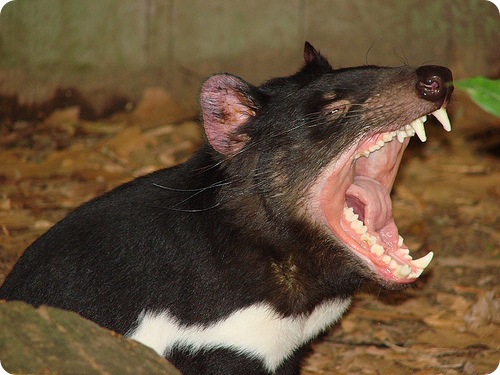
Tasmanian Devil. The world's largest carnivorous marsupial of modern, this animal is a black dog with white spots on the chest and rump, with a huge mouth and sharp teeth and a tight physique harsh temper, for which, in fact, been called the devil. Uttering ominous cries at night, a massive and clumsy Tasmanian devil looks like a small bear, the forelegs slightly longer hind legs, large head, blunt snout.
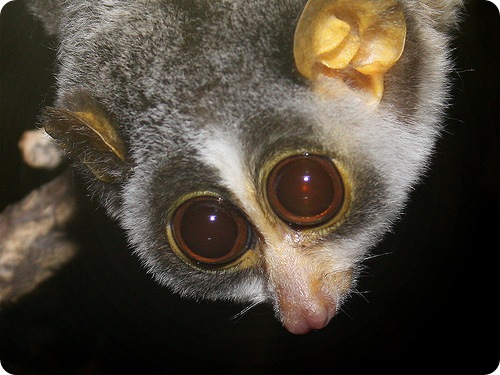
LORI. A characteristic feature of Lori - large eyes, which can enclose dark circles, between the eyes with a white stripe separating. Lori muzzle can be compared with the clown mask. This is most likely explains the name of animal: Loeris means "clown."
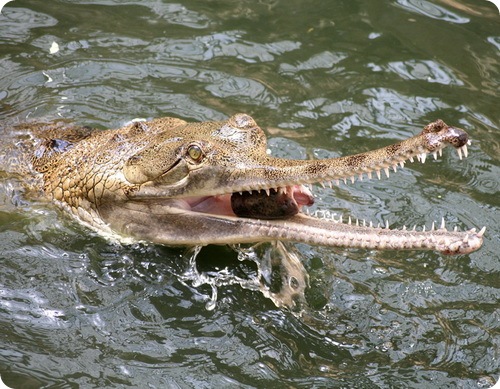
Gharial. Of course, one of the representatives of the order of crocodiles. With age, the face gharial becomes even narrower and longer. Due to the fact that the gharial eats fish, whose teeth are long and pointed, located on a slight slope for easy eating.
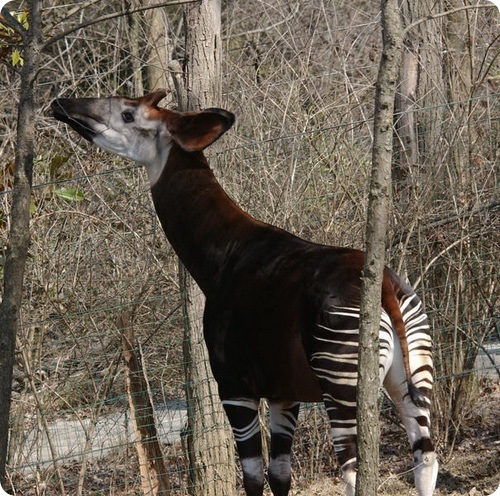
OKAPI. WOOD GIRAFFE. Traveling through Central Africa, a journalist and explorer Henry Morton Stanley in Africa (1841-1904) more than once confronted with the local Aborigines. After meeting one day expedition, equipped with horses, the natives of the Congo told the famous traveler, they have a jungle inhabited by wild animals, very similar to his horses. Many had seen the Englishman was a bit puzzled by this fact. After some negotiations in 1900, the British were finally able to acquire part of the mysterious animal skins from the local population and send them to the Royal Zoological Society of London, where an unknown animal was given the name "Horse Johnston» (Equus johnstoni), that is identified by his family horse . But what was their surprise when a year later managed to get the whole skin and two skulls of unknown animals, and find that it's more like a pygmy giraffe since the Ice Age. Only in 1909, managed to catch a live specimen Okapi.

VALABI. WOOD KANGAROO. The genus Woody kangaroo - wallaby (Dendrolagus) include six species. Of them live in New Guinea, D. Inustus or bearish wallabies, D. Matschiei or wallabies Matchisha having a subspecies of D. Goodfellowi (wallabies Goodfellow), D. Dorianus - wallaby Doria. The Australian Queensland inhabited D. Lumholtzi - wallaby Lumgoltsa (bungari), D. Bennettianus - Bennett wallabies, or tharibina. Original place of their habitation was New Guinea, but now are found and wallabies in Australia. Wood kangaroos live in tropical forests, mountains, at altitudes from 450 to 3000m. above sea level. The size of the animal's body 52-81 cm, tail length from 42 to 93 cm Wallaby weigh, depending on the species, from 7.7 to 10 kg, males and from 6.7 to 8.9 kg. females.
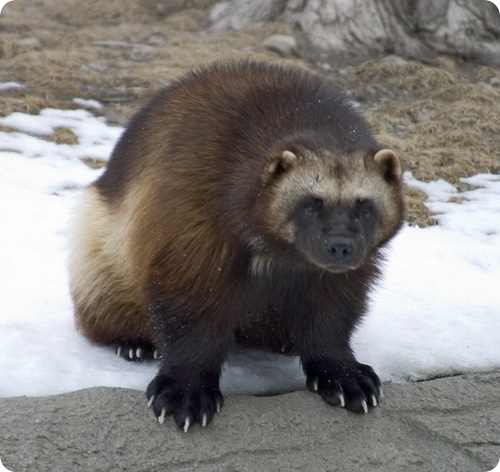
Wolverine. Moves quickly and deftly. The animal elongated snout, large head with rounded ears. Jaws strong, teeth are sharp. Wolverine - "bolshenogy" beast foot out of proportion relative to the body, but their size can move freely through the deep snow cover. On each paw, and huge curved claws. Wolverine fine climbs trees, has keen eyesight. A voice like a fox.
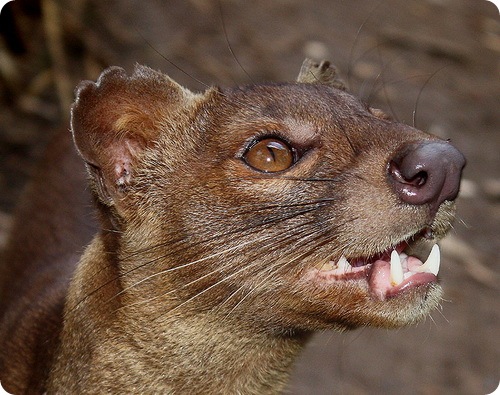
Foss. On the island of Madagascar have survived such animals, of which there is not only in Africa itself but throughout the rest of the world. One of the rarest animals is the Fosse - the only member of the genus Cryptoprocta and the largest carnivorous mammal that lives on the island of Madagascar. Foss appearance a bit unusual: it is a cross between civet and small Puma. Sometimes called the Foss and the Madagascan lion, as the ancestors of this animal was much larger and reached a size of a lion. Foss has a squat, massive and slightly elongated body, whose length can reach up to 80 cm (on average it is 65-70 cm). Paws for Foss long, but thick enough, and the hind legs above the front. The tail is often equal to the length of the body and reaches up to 65 cm

MANUL endorses this position and is here only because they must be present. Its really something everyone knows.
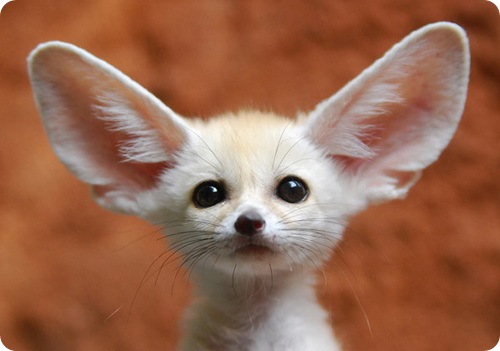
Fenech. STEPPE FOX. Pallas assents and present here only insofar as. After all, it saw everything.
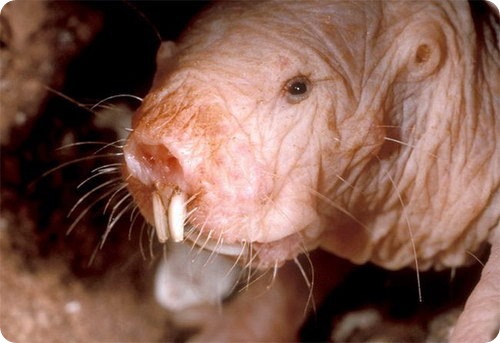
NAKED Digger puts manul Fenech and Reputation in karma, and invites them to organize the club has the most animals in runet boyanistyh.
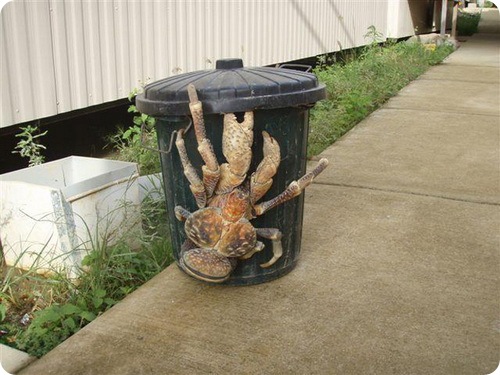
PALM THIEF. Representative decapods. Habitat which is the western Pacific and the tropical Indian Ocean islands. This animal is from a family of land crabs is large enough for their own kind. Adult body size reaches up to 32 cm and weigh up to 3 - 4 kg. For a long time erroneously believed that his claws, he can even split the coconuts, which are eaten after. To date, scientists have proved that cancer can eat only coconuts already split. They, being its main source of food, and given the name of the palm thief. Although he is not averse to eat and other foods - fruits of plants Pandanus, organic substances from the soil and even their own kind.
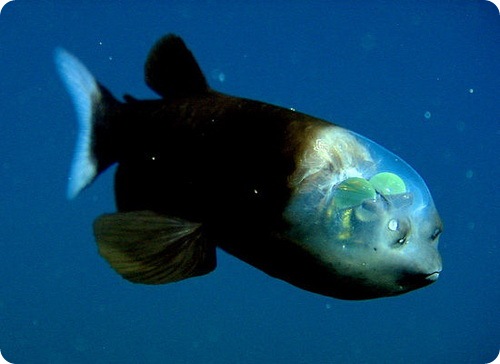
The name of this fish in Latin sounds too boring, because it is easier to call a fish with a TRANSPARENT HEAD. It has a transparent head, through which she can see their tubular eyes. Head, through which the fish follows the production, helps protect the eye. First discovered in 1939. Inhabits deep water much, so do not fully been studied. In particular, do not quite understand was the principle of the fish. It was believed that she must be very great difficulties due to the fact that she can only look up. Only in 2009 was completely study the structure of the eye of the fish. Apparently when trying to study it before the fish just could not stand the pressure change.
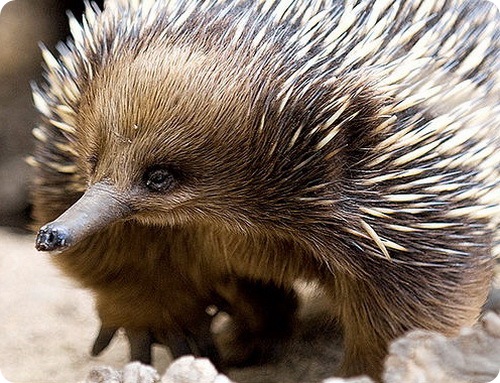
Echidna. well, everything.
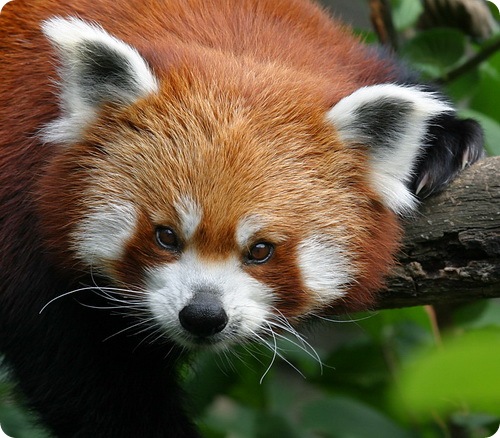
SMALL RED PANDA. Today the red panda in its natural habitat can be found only in the mountainous bamboo forests of China's Yunnan and Sichuan, northern Burma, Bhutan, Nepal and northeast India.
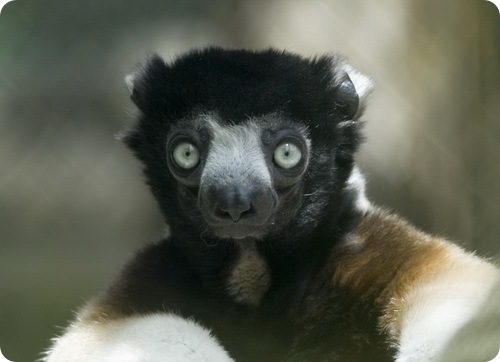
SIFAKA. Monkey family indrievyh. A relatively new genus of primate, opened only in 2004. Live silky sifaki in eastern Madagascar. The area is about 2.2 thousand square meters. km. Distribution territory bounded on the north of the core area of Marojejy Massif, and the southern reaches Anjanahari. Adults have a body length of the head from 45 to 55 cm, tail length 45-51 cm Weight: 5-6.5 kg.
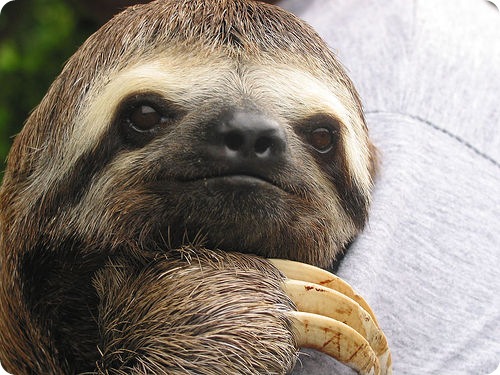
Sloth. A very interesting species of mammals, has several distinctive features that make it different to any other existing form. He dwells mainly in Central and South America.
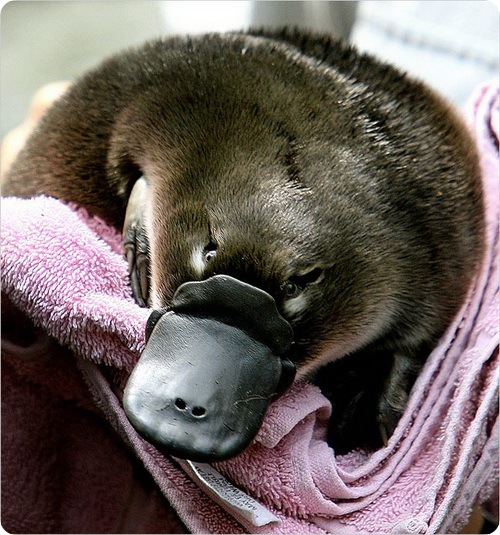
The platypus. Principle the, known to all. But this photo deserve attention ...
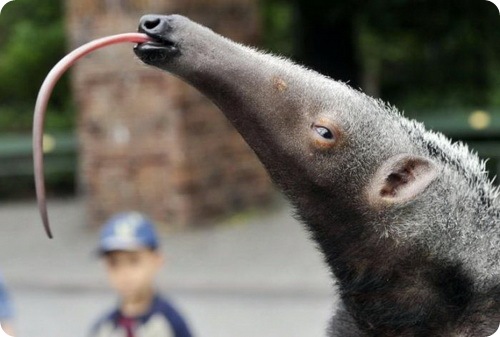
Aardvark. Also no surprise. But a great shot ...

Dolgopolov. A small mammal of the order of primates, a very specific appearance is created around this small animal weighing up to one hundred and sixty grams of several ominous aura. Thus, the indigenous people of Indonesia and the Philippines tied ridiculous appearance of tarsiers with the antics of the evil spirits. However, many of our contemporaries who first see tarsiers in its native habitat, are amazed at its nonstandard appearance.
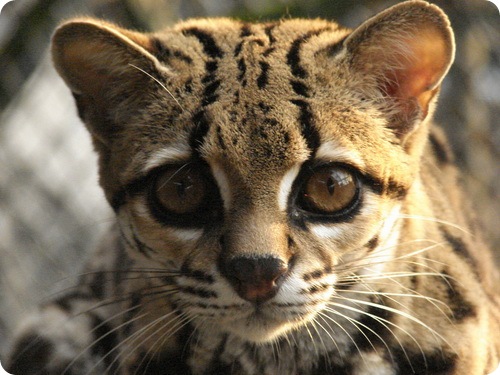
Margao. From "relatives" of these wild cats vary in size and body proportions, as well as lifestyle. For example, the Margay is very similar to its closest relative - Ocelot, who, moreover, often found in the same place, inhabited by Margay. Distinguish these cats is simple - ocelot much larger, since they prefer to hunt on the ground, and Margay has longer legs and tail, mainly due to a life in the trees.
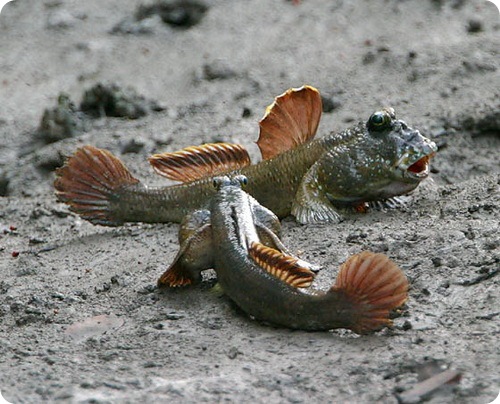
Muddy jumper. Is found in intertidal areas and in areas such as tropical wetlands, resulting in growth of mangrove areas. Particularly muddy jumpers like to settle in places where fresh water meets the sea. Although from a scientific point of view, this fish, and many see them as amphibians. Well, in a sense, the way it is.
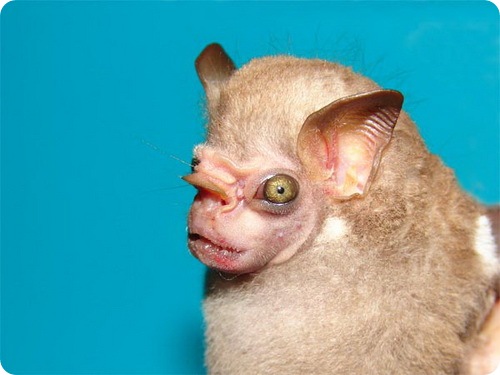
HERBIVORES DRACULA. Bats («Sphaeronycteris toxophyllum» lat.) This species is found in northern South America (Amazon river basin and mountain). These bats, oddly enough, are herbivores.
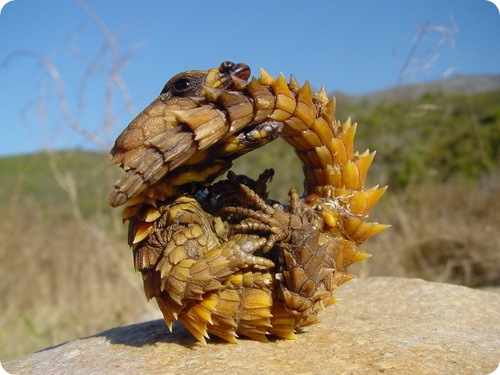
POYASOHVOST. Poyasohvostov habitat extends to the rocky regions of Africa, with a dry climate, mainly from the south of the Sahara. In addition, poyasohvosty a certain amount of live and on the island of Madagascar. Poyasohvostov there are more than forty species. Dimensions poyasohvostov quite different and range from 12 to 70 centimeters in length. The entire body is covered with rectangular plates poyasohvosta - scales that cover the bony framework reptile.
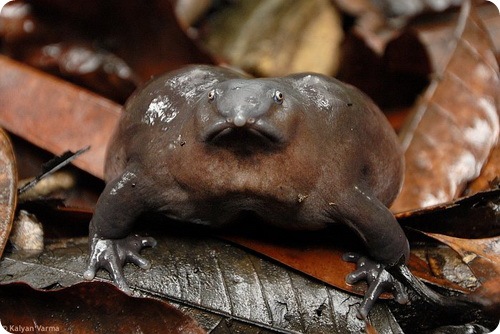
In my opinion, skromnyaga.
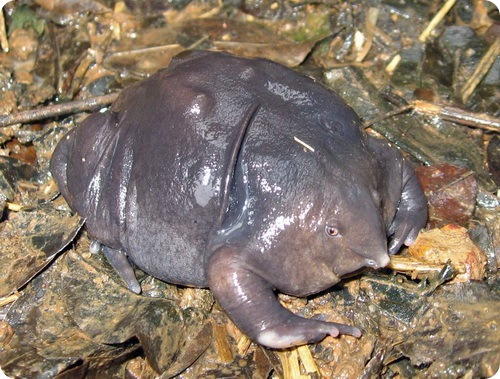
LILAC FROG. Some animals were able to adapt to the data, at first sight, very difficult conditions and even learned how to benefit from the changing seasons. Here and Native Indian purple frog (Nasikabatrachus sahyadrensis), which was opened as a species only recently - in 2003, uses the monsoons with the use of - for the continuation of some sort.
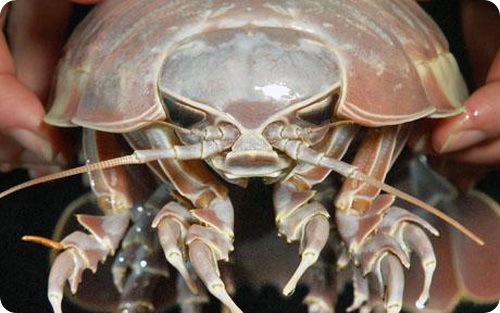
Isopods. Giant isopods woodlice length about 30 cm in the deep sea live about 1.6 miles.

SUNNY BEAR. Malayan bear biruang, or, as it is called by the characteristic color, sunlight, or honey bear, lives in India, Myanmar, as well as on the islands of Borneo, Java and Sumatra. He is big enough interest to zoologists, and for lovers of wildlife, as this species belongs to the most stunted, the most aggressive and the smallest members of the family bear. By the way, just threatening small number of this kind and was the cause of entry biruangov in the Red Book.
Adult sun bear has very severe. But enough of great interest due to his person is not the place of his habitation, and not the character, and stunning appearance, which immediately catches the eye from any photo.
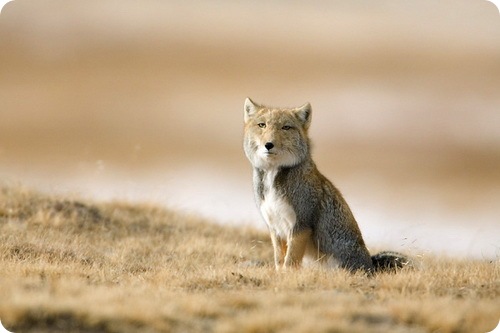
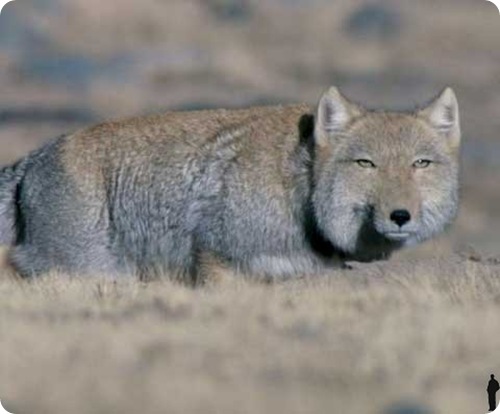
TIBETAN FOX. Found in Tibet in the north-west of India and Nepal, north at high altitudes.
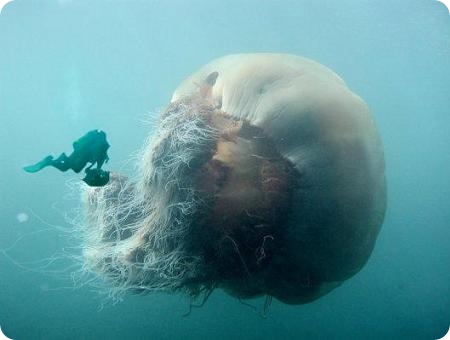
Medusa. Just a giant jellyfish.

GOLD TIGER. That's called the Tigers with a similar color. The reason for unusual colors - "did not work," one of the genes. Consider, as an albino ...

Aye-aye. RUKONOZHKA. Rukonozhka Madagascan or ay-ay, a mammal of the suborder prosimians, the only member of the family rukonozhek. Body length 40 cm, 60 cm of the tail head is large, the muzzle is short, the ears are large, leathery. The tail is bushy. Hair color from dark brown to black.
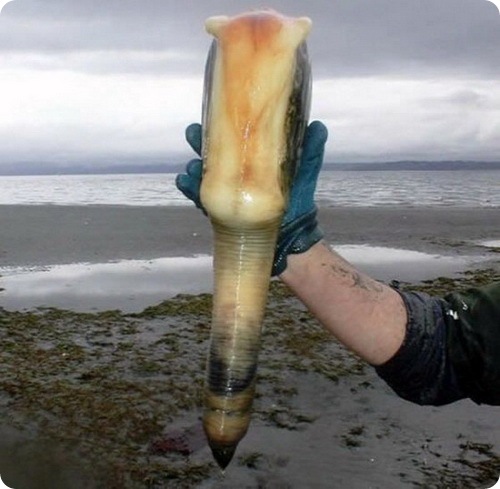
GUYDAK. Large gastropod up to a half kilograms. Is found off the west coast of the United States. Of the thin brittle shell guidaka (about 20 cm in length) serves "leg", which is three times more shells. The English name is a clam (geoduck, gweduck) appeared at the end of the XIX century, is derived from the name of the shellfish in the language of the Indians-niskualey (and therefore pronounced "guidak"), meaning "digging deep" - this is really quite deeply clams buried in the sand.

Devil. Is an extinct marsupial mammal, the sole representative of the family tilatsinovyh. This animal is also known as the "Tasmanian Tiger" and "Tasmanian wolf". In the early Holocene and late Pleistocene marsupial wolf was found on the Australian mainland and the island of New Guinea. About 3,000 years ago, settlers Aboriginal brought to the island of wild dingo dog, resulting in a marsupial wolf disappeared from the territory. In XVIII-XIX centuries. main habitat the marsupial wolf of Tasmania was considered, but in the thirties of the XIX century the mass extermination of the animal, which is mistakenly believed destroyer of domestic sheep. In addition, tilatsinu attributed to hunting and destruction of poultry, wild game caught in traps. Most of these legends was a lie.
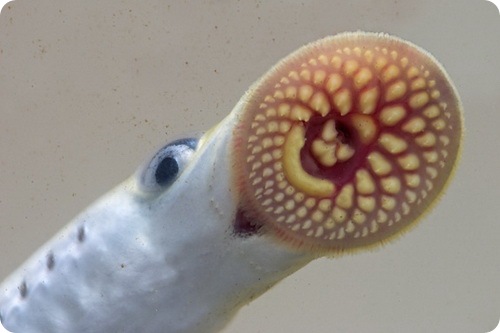
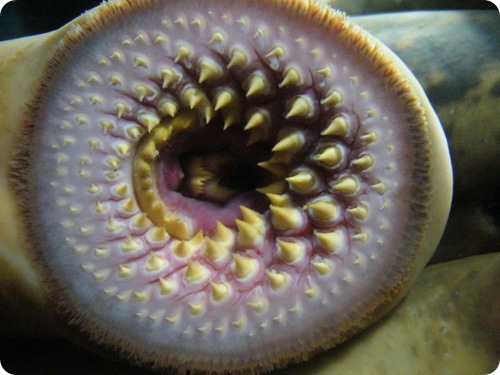
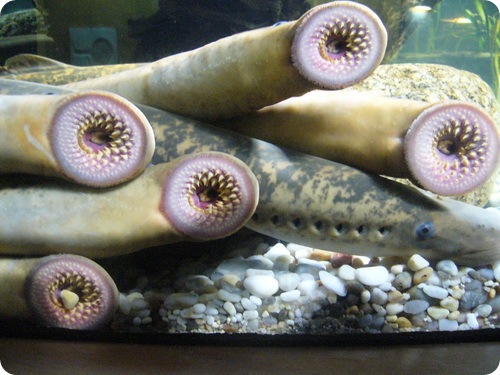
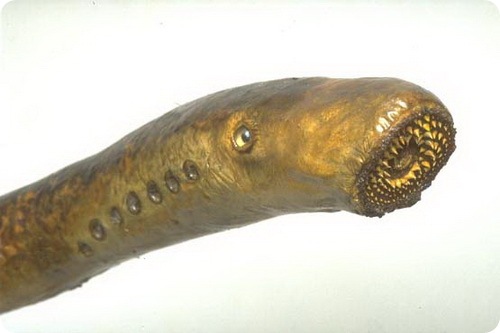
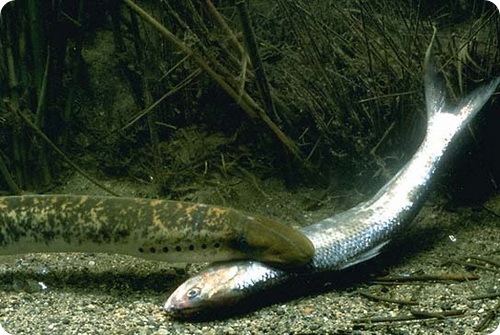
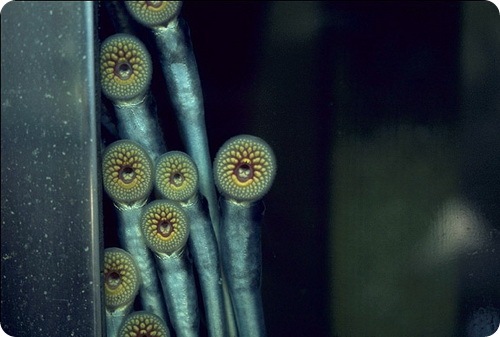
Lamprey. Species, under threat of destruction. Reaches a length of 120 cm and weight of 3 kg. Spawns in June and early July in the rivers. The male builds a nest about 50 cm in diameter and it protects. After spawning, the producers are killed. The larvae live in the river 5-6 years after metamorphosis, the young migrate to the sea lamprey, sea during about 3 years. At sea, stick to the fish (external parasites of larger fish) - cod, plaice, etc.
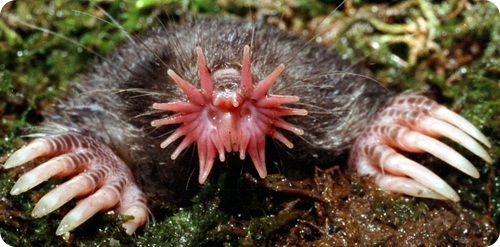
ZVEZDONOS. Insectivore mammal family mole. Externally zvezdonos different from the rest of the family and other small animals just to him peculiar structure of the stigma in a rosette or a star out of 22 soft fleshy movable bare beams. In size, spatulate forelegs, thick velvety fur (black or dark brown) is similar to the European mole. --
You received this message because you are subscribed to the Google Groups "kl-bogel" group.
To post to this group, send email to kl-bogel@googlegroups.com
To subscribe or unsubscribe at http://groups.google.com.my/group/kl-bogel/subscribe
For more options, visit this group at http://groups.google.com/group/kl-bogel?hl=en
Sebarang email pertanyaan, hantar kepada abangmod@gmail.com
Plus a brief comment on each. All of them are actually
See and be surprised


SCHELEZUB - insectivorous mammal of the order, divided into two main types: Cuban and Haitian schelezub. Comparatively large relative to other types of insect, animal: its length is 32 centimeters and the tail, on average, 25 cm, weight of the animal - about 1 kilogram, dense physique.

WOLF long-manned. Lives in South America. Wolf's long legs - the result of evolution in the issues of adaptation to habitat, they help the animal to overcome obstacles such as high grass growing on the plains.

AFRICAN TSIVETA - the sole representative of the eponymous family. These animals live in Africa, in open spaces with high grass from Senegal to Somalia, southern Namibia and eastern South Africa. The dimensions of the beast can visually strong enough to increase when the excitation tsiveta raises hair. And her fur is thick and long, especially on the back near the tail. Paws, muzzle and the tail end of an absolutely black, most of the body pyatnistopolosataya.

Muskrat. The animal is sufficiently well known for its sonorous name. Just picture a good one.

PROEHIDNA. This natural wonder is usually weighs up to 10kg, although there were more large specimens. By the way, the length of the body proehidny reaches 77 cm, and that's not counting their beloved five to seven centimeter tail. Any description of this animal is based on a comparison with a malicious: proehidny feet above the claws more powerful. Another feature of the appearance proehidny - it spurs on their hind legs of males and five-fingered and three-toed hind legs forward.

Capybaras. Semi-aquatic mammals, the largest of modern rodents. Is the sole representative of the family vodosvinkovyh (Hydrochoeridae). There is a dwarf variety Hydrochoerus isthmius, sometimes it is treated as a separate species (small capybara).

Sea cucumber. Sea cucumbers. Marine pods, sea cucumbers (Holothuroidea), a class of invertebrates such as echinoderms. Species used for food, have a common name "sea cucumber".

Pangolin. This post just could not do without it.

Infernal vampire. Shellfish. Despite its apparent similarity to the octopus and squid, shellfish, scientists have identified this as a separate unit Vampyromorphida (Latin), because as soon as it has its own retractable sensitive bichevidnye filaments.

Aardvark. In Africa, these mammals called the aardvark, which is translated in Russian means "earth pig." In fact, aardvark in appearance very much like a pig, but with an elongated snout. The ears of this amazing animal in its structure is very similar to rabbit. It is also still there and the muscular tail, which is very similar to the animal's tail like a kangaroo.

JAPANESE giant salamanders. To date - is the largest amphibian, which can reach 160 cm in length, weigh up to 180 kg and can live to 150 years, although officially registered the maximum age of the giant salamander is 55 years.

Bearded Pigs. Different sources Bearded pig species is subdivided into two or three subspecies. It's - curly bearded pig (Sus barbatus oi), who lives on the Malay Peninsula and Sumatra, the bearded pig borneyskaya (Sus barbatus barbatus) and bearded pig palavanskaya who live, as the name implies, the island of Borneo and Palawan, as well as in Java , Kalimantan and small islands of the Indonesian archipelago in Southeast Asia.


Sumatran rhinoceros. Belong to the family pet Perissodactyla nosorogovyh. This type of rhinoceros is the smallest of the entire family. Body length of the Sumatran rhino adult can reach 200 - 280 cm and the height at the withers varies from 100 to 150 cm such rhinos can weigh up to 1,000 kg.

SULAVESSKY BEAR couscous. Wood marsupial that lives in the upper tier of the lowland tropical forests. Wool bear couscous is soft undercoat and a coarse guard hairs. Color varies from gray to brown, with light-colored belly and a more limbs and varies depending on geographic and subspecies of the animal's age. Grasping, not woolly tail is about half the length of the animal and serves as a fifth limb, making it easier to advance in the dense tropical forest. Bear Couscous is the most primitive of all the couscous, which retains a primitive dentition and structural features of the skull.

Galago. His big bushy tail is clearly comparable with the squirrel. A charming and attractive face graceful movements, flexibility, and insinuating, clearly reflect his feline trait. Amazing jumping, agility, strength and incredible agility of this animal clearly shows his nature funny cats and the elusive protein. Of course it would where to use their talents, because a small cage for this very ill-suited. But if you give this kind of animal a little freedom, and sometimes let him walk around the apartment, then all its quirks and talents will become a reality. Many people even compare it to the kangaroo.

Wombat. No photo wombat generally can not talk about strange and rare animals.

AMAZON DOLPHIN. Is the largest river dolphin. Inia geoffrensis, as scientists call it, up to 2.5 meters in length and weight of 2 tons per. Light gray with age, the juveniles grow lighter. The body of the Amazonian dolphin, complete with a thin tail and a narrow snout. Round his forehead a little hooked beak and small eyes - especially this kind of dolphin. Amazon dolphin is found in rivers and lakes in Latin America.

Sunfish or Mola mola-. This fish can be more than three meters long and weigh about one and a half tons. The biggest instance of the fish-moon was caught in New Hampshire, USA. Its length was five and a half meters, the data on weight are not available. The shape of the body of the fish resembles a disc, it is this feature was the occasion for the Latin name. In fish, the moon is very thick skin. It is flexible and its surface is covered with small bony protrusions. The larvae of this species of fish and the juveniles swim in the usual way. Adult Large fish swim on their sides, quietly moving fins. They seem to lie on the surface of the water, where they are very easy to spot and catch. However, many experts believe that swim just so sick of fish. As an argument, they cite the fact that the stomach is caught at the surface of the fish is usually empty.

Tasmanian Devil. The world's largest carnivorous marsupial of modern, this animal is a black dog with white spots on the chest and rump, with a huge mouth and sharp teeth and a tight physique harsh temper, for which, in fact, been called the devil. Uttering ominous cries at night, a massive and clumsy Tasmanian devil looks like a small bear, the forelegs slightly longer hind legs, large head, blunt snout.

LORI. A characteristic feature of Lori - large eyes, which can enclose dark circles, between the eyes with a white stripe separating. Lori muzzle can be compared with the clown mask. This is most likely explains the name of animal: Loeris means "clown."

Gharial. Of course, one of the representatives of the order of crocodiles. With age, the face gharial becomes even narrower and longer. Due to the fact that the gharial eats fish, whose teeth are long and pointed, located on a slight slope for easy eating.

OKAPI. WOOD GIRAFFE. Traveling through Central Africa, a journalist and explorer Henry Morton Stanley in Africa (1841-1904) more than once confronted with the local Aborigines. After meeting one day expedition, equipped with horses, the natives of the Congo told the famous traveler, they have a jungle inhabited by wild animals, very similar to his horses. Many had seen the Englishman was a bit puzzled by this fact. After some negotiations in 1900, the British were finally able to acquire part of the mysterious animal skins from the local population and send them to the Royal Zoological Society of London, where an unknown animal was given the name "Horse Johnston» (Equus johnstoni), that is identified by his family horse . But what was their surprise when a year later managed to get the whole skin and two skulls of unknown animals, and find that it's more like a pygmy giraffe since the Ice Age. Only in 1909, managed to catch a live specimen Okapi.

VALABI. WOOD KANGAROO. The genus Woody kangaroo - wallaby (Dendrolagus) include six species. Of them live in New Guinea, D. Inustus or bearish wallabies, D. Matschiei or wallabies Matchisha having a subspecies of D. Goodfellowi (wallabies Goodfellow), D. Dorianus - wallaby Doria. The Australian Queensland inhabited D. Lumholtzi - wallaby Lumgoltsa (bungari), D. Bennettianus - Bennett wallabies, or tharibina. Original place of their habitation was New Guinea, but now are found and wallabies in Australia. Wood kangaroos live in tropical forests, mountains, at altitudes from 450 to 3000m. above sea level. The size of the animal's body 52-81 cm, tail length from 42 to 93 cm Wallaby weigh, depending on the species, from 7.7 to 10 kg, males and from 6.7 to 8.9 kg. females.

Wolverine. Moves quickly and deftly. The animal elongated snout, large head with rounded ears. Jaws strong, teeth are sharp. Wolverine - "bolshenogy" beast foot out of proportion relative to the body, but their size can move freely through the deep snow cover. On each paw, and huge curved claws. Wolverine fine climbs trees, has keen eyesight. A voice like a fox.

Foss. On the island of Madagascar have survived such animals, of which there is not only in Africa itself but throughout the rest of the world. One of the rarest animals is the Fosse - the only member of the genus Cryptoprocta and the largest carnivorous mammal that lives on the island of Madagascar. Foss appearance a bit unusual: it is a cross between civet and small Puma. Sometimes called the Foss and the Madagascan lion, as the ancestors of this animal was much larger and reached a size of a lion. Foss has a squat, massive and slightly elongated body, whose length can reach up to 80 cm (on average it is 65-70 cm). Paws for Foss long, but thick enough, and the hind legs above the front. The tail is often equal to the length of the body and reaches up to 65 cm

MANUL endorses this position and is here only because they must be present. Its really something everyone knows.

Fenech. STEPPE FOX. Pallas assents and present here only insofar as. After all, it saw everything.

NAKED Digger puts manul Fenech and Reputation in karma, and invites them to organize the club has the most animals in runet boyanistyh.

PALM THIEF. Representative decapods. Habitat which is the western Pacific and the tropical Indian Ocean islands. This animal is from a family of land crabs is large enough for their own kind. Adult body size reaches up to 32 cm and weigh up to 3 - 4 kg. For a long time erroneously believed that his claws, he can even split the coconuts, which are eaten after. To date, scientists have proved that cancer can eat only coconuts already split. They, being its main source of food, and given the name of the palm thief. Although he is not averse to eat and other foods - fruits of plants Pandanus, organic substances from the soil and even their own kind.

The name of this fish in Latin sounds too boring, because it is easier to call a fish with a TRANSPARENT HEAD. It has a transparent head, through which she can see their tubular eyes. Head, through which the fish follows the production, helps protect the eye. First discovered in 1939. Inhabits deep water much, so do not fully been studied. In particular, do not quite understand was the principle of the fish. It was believed that she must be very great difficulties due to the fact that she can only look up. Only in 2009 was completely study the structure of the eye of the fish. Apparently when trying to study it before the fish just could not stand the pressure change.

Echidna. well, everything.

SMALL RED PANDA. Today the red panda in its natural habitat can be found only in the mountainous bamboo forests of China's Yunnan and Sichuan, northern Burma, Bhutan, Nepal and northeast India.

SIFAKA. Monkey family indrievyh. A relatively new genus of primate, opened only in 2004. Live silky sifaki in eastern Madagascar. The area is about 2.2 thousand square meters. km. Distribution territory bounded on the north of the core area of Marojejy Massif, and the southern reaches Anjanahari. Adults have a body length of the head from 45 to 55 cm, tail length 45-51 cm Weight: 5-6.5 kg.

Sloth. A very interesting species of mammals, has several distinctive features that make it different to any other existing form. He dwells mainly in Central and South America.

The platypus. Principle the, known to all. But this photo deserve attention ...

Aardvark. Also no surprise. But a great shot ...

Dolgopolov. A small mammal of the order of primates, a very specific appearance is created around this small animal weighing up to one hundred and sixty grams of several ominous aura. Thus, the indigenous people of Indonesia and the Philippines tied ridiculous appearance of tarsiers with the antics of the evil spirits. However, many of our contemporaries who first see tarsiers in its native habitat, are amazed at its nonstandard appearance.

Margao. From "relatives" of these wild cats vary in size and body proportions, as well as lifestyle. For example, the Margay is very similar to its closest relative - Ocelot, who, moreover, often found in the same place, inhabited by Margay. Distinguish these cats is simple - ocelot much larger, since they prefer to hunt on the ground, and Margay has longer legs and tail, mainly due to a life in the trees.

Muddy jumper. Is found in intertidal areas and in areas such as tropical wetlands, resulting in growth of mangrove areas. Particularly muddy jumpers like to settle in places where fresh water meets the sea. Although from a scientific point of view, this fish, and many see them as amphibians. Well, in a sense, the way it is.

HERBIVORES DRACULA. Bats («Sphaeronycteris toxophyllum» lat.) This species is found in northern South America (Amazon river basin and mountain). These bats, oddly enough, are herbivores.

POYASOHVOST. Poyasohvostov habitat extends to the rocky regions of Africa, with a dry climate, mainly from the south of the Sahara. In addition, poyasohvosty a certain amount of live and on the island of Madagascar. Poyasohvostov there are more than forty species. Dimensions poyasohvostov quite different and range from 12 to 70 centimeters in length. The entire body is covered with rectangular plates poyasohvosta - scales that cover the bony framework reptile.

In my opinion, skromnyaga.

LILAC FROG. Some animals were able to adapt to the data, at first sight, very difficult conditions and even learned how to benefit from the changing seasons. Here and Native Indian purple frog (Nasikabatrachus sahyadrensis), which was opened as a species only recently - in 2003, uses the monsoons with the use of - for the continuation of some sort.

Isopods. Giant isopods woodlice length about 30 cm in the deep sea live about 1.6 miles.

SUNNY BEAR. Malayan bear biruang, or, as it is called by the characteristic color, sunlight, or honey bear, lives in India, Myanmar, as well as on the islands of Borneo, Java and Sumatra. He is big enough interest to zoologists, and for lovers of wildlife, as this species belongs to the most stunted, the most aggressive and the smallest members of the family bear. By the way, just threatening small number of this kind and was the cause of entry biruangov in the Red Book.
Adult sun bear has very severe. But enough of great interest due to his person is not the place of his habitation, and not the character, and stunning appearance, which immediately catches the eye from any photo.


TIBETAN FOX. Found in Tibet in the north-west of India and Nepal, north at high altitudes.

Medusa. Just a giant jellyfish.

GOLD TIGER. That's called the Tigers with a similar color. The reason for unusual colors - "did not work," one of the genes. Consider, as an albino ...

Aye-aye. RUKONOZHKA. Rukonozhka Madagascan or ay-ay, a mammal of the suborder prosimians, the only member of the family rukonozhek. Body length 40 cm, 60 cm of the tail head is large, the muzzle is short, the ears are large, leathery. The tail is bushy. Hair color from dark brown to black.

GUYDAK. Large gastropod up to a half kilograms. Is found off the west coast of the United States. Of the thin brittle shell guidaka (about 20 cm in length) serves "leg", which is three times more shells. The English name is a clam (geoduck, gweduck) appeared at the end of the XIX century, is derived from the name of the shellfish in the language of the Indians-niskualey (and therefore pronounced "guidak"), meaning "digging deep" - this is really quite deeply clams buried in the sand.

Devil. Is an extinct marsupial mammal, the sole representative of the family tilatsinovyh. This animal is also known as the "Tasmanian Tiger" and "Tasmanian wolf". In the early Holocene and late Pleistocene marsupial wolf was found on the Australian mainland and the island of New Guinea. About 3,000 years ago, settlers Aboriginal brought to the island of wild dingo dog, resulting in a marsupial wolf disappeared from the territory. In XVIII-XIX centuries. main habitat the marsupial wolf of Tasmania was considered, but in the thirties of the XIX century the mass extermination of the animal, which is mistakenly believed destroyer of domestic sheep. In addition, tilatsinu attributed to hunting and destruction of poultry, wild game caught in traps. Most of these legends was a lie.






Lamprey. Species, under threat of destruction. Reaches a length of 120 cm and weight of 3 kg. Spawns in June and early July in the rivers. The male builds a nest about 50 cm in diameter and it protects. After spawning, the producers are killed. The larvae live in the river 5-6 years after metamorphosis, the young migrate to the sea lamprey, sea during about 3 years. At sea, stick to the fish (external parasites of larger fish) - cod, plaice, etc.

ZVEZDONOS. Insectivore mammal family mole. Externally zvezdonos different from the rest of the family and other small animals just to him peculiar structure of the stigma in a rosette or a star out of 22 soft fleshy movable bare beams. In size, spatulate forelegs, thick velvety fur (black or dark brown) is similar to the European mole. --
You received this message because you are subscribed to the Google Groups "kl-bogel" group.
To post to this group, send email to kl-bogel@googlegroups.com
To subscribe or unsubscribe at http://groups.google.com.my/group/kl-bogel/subscribe
For more options, visit this group at http://groups.google.com/group/kl-bogel?hl=en
Sebarang email pertanyaan, hantar kepada abangmod@gmail.com
Comments
Post a Comment